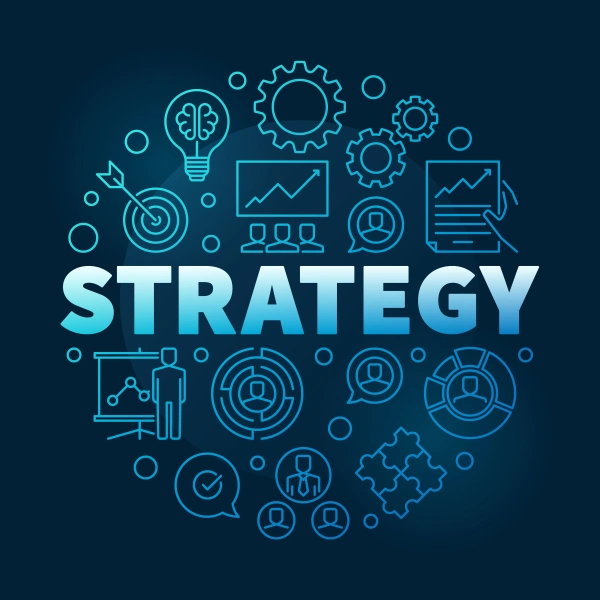4 Strategy Frameworks and Tools for Business Success
Business strategy is an important job function for any manager, as it determines how the company operates and what goals the company will be striving for. Suppose you want to be a valuable asset to your organization.
In that case, you should provide practical guidance and decision-making that will allow the organization to achieve its goals.
A strategy that works for one organization may not work for another.The organization should assess its strengths and weaknesses and develop a strategy that works best for it.
It should also reassess its business strategy as it faces new challenges and opportunities.
To write a successful strategy, you need to analyze your business and its position in a competitive landscape.
Your business might be far from perfect, but there are always things you can do to develop it.
There are plenty of business strategies used to contribute to your organization’s growth. Here are four strategy frameworks that could work for your business.
Strategy Frameworks and Tools You Should Know
1. The Jobs to Be Done (JTBD) framework
This strategy framework is a way to validate a consumer’s need for a product.
The basis of the jobs to be done theory is that when people purchase products, they “hire” them to do a “job.” For example, when someone buys chewing gum, they “hire” it to remove unwanted tastes in their mouth.
It’s essential to understand what job your company’s offering can do for consumers to create brand messaging, differentiate your product from competitors, and improve it.

The Jobs to be done framework can be used at the beginning of the product development process to create new products and services responding to customer jobs that aren’t being done.
It can also be used at the end of the product development process to reassess the usefulness of your current offerings in response to how the jobs to be done of your customers has changed since you created them.
It’s essential to understand how the needs have changed since your product or service conception determines how to keep that product or service relevant to the customer.
To influence your target audience, you must understand their needs. Once you know what they need, you can align your product to meet those needs.
Understanding your customers and creating something they want will help your business grow.
2. Value stick framework
When creating a pricing strategy, it is helpful first to determine your product’s value. This can be done by using a strategy framework called the ‘value stick.’
The value stick is a tool for visualizing the value of a product. The stick is divided into four sections: willingness to pay, price, cost, and desire to sell.

The value of a product is inversely related to its price. The higher the price of a product, the lower its importance to the customer.
It’s essential to understand the relationship between the supplier, business, and customer and how each entity gains value from your product.
At the core of a great business strategy is always the customer. If you don’t know who your customer is, you won’t sell to them.
3. Job Design Optimization Tool
The JDOT is a tool that helps you to evaluate the roles in your organization based on how much strategic impact each one of them has.
All your position’s functions are presented on a grid, where each post is an axis, and the spans are the cells. The spans are the control, accountability, influence, and support of that role.
You can determine how much of these four spans are necessary and optimal for your company by moving the cells.
One way to use the JDOT is to keep your organization’s strategy in mind while you’re using it.
If you see that a particular role is too concentrated, you can take that information to your team and explain that it’s essential to spread the work out more.
Disruptive innovation is the idea that a smaller company with fewer resources can move upmarket and challenge larger, established businesses.

The theory is based on the thought that a small company will often see a business opportunity before the market is ready to create a new product for a new market.
This creates a gap between the company and its customers, which the company will have to overcome to grow successfully.
There are two categories of disruptive innovation: low-end disruption and new-market disruption.
When you have an existing product, another company can come along and create a new and improved product that is better than yours at a lower price. This is what is known as low-end disruption.
An example of this is when Blu-ray players came out. They were more expensive and had fewer features than DVD players, but they had better picture quality.
New market disruption is when the product is created for a new market. This type of disruption is when a product is designed for a new market that hasn’t existed before.
Examples of this are when new technology is developed that makes it possible to do things that weren’t possible.
Conclusion
Setting goals is a necessary process that is time-consuming and requires continuous reassessment.
It’s crucial to leverage tools and strategy frameworks to ensure that your goals are achievable and that you have the right business strategy.
Your goals should align with your company’s vision and purpose, and make sure of that; you need to be very well informed and up-to-date on what’s happening in your industry.
By doing that, you can devise a strategy that will help you grow your company.
About the Author
Eugen Spivak is a multi-award-winning author, business strategist, and a business coach. Eugen is the founder of the Canadian Institute of International Business, an organization focused on a better way to learn business!
Study With Us!
We offer practical courses in various areas of business. Our instructors have at least 10 years of practical experience in their fields.



